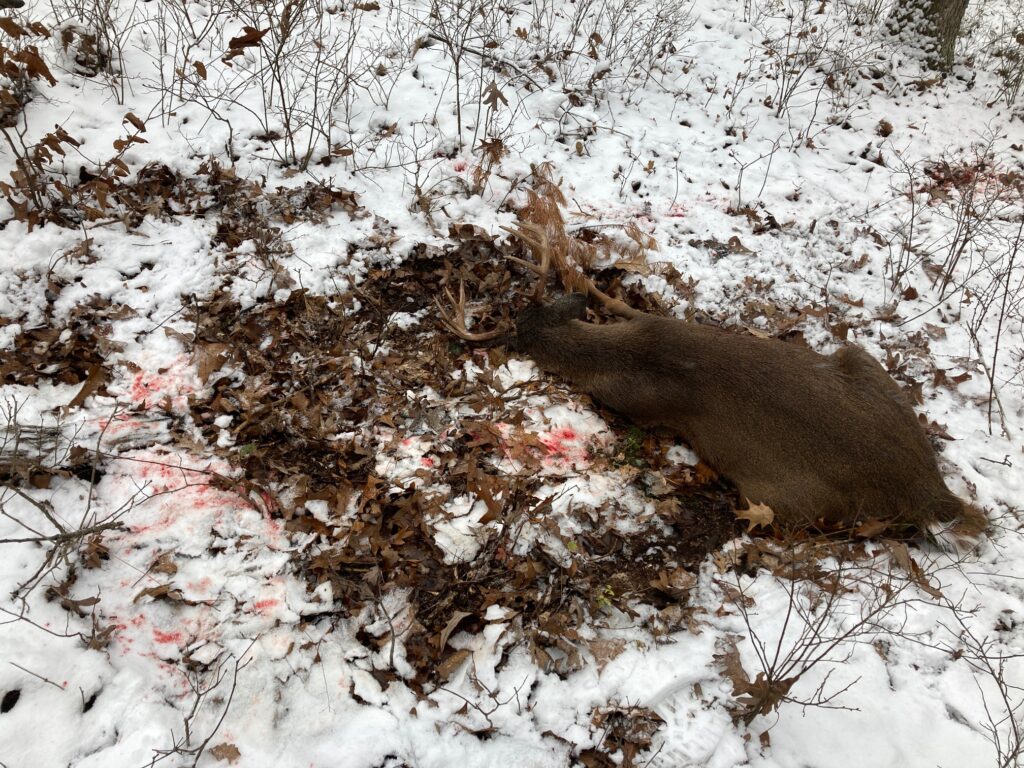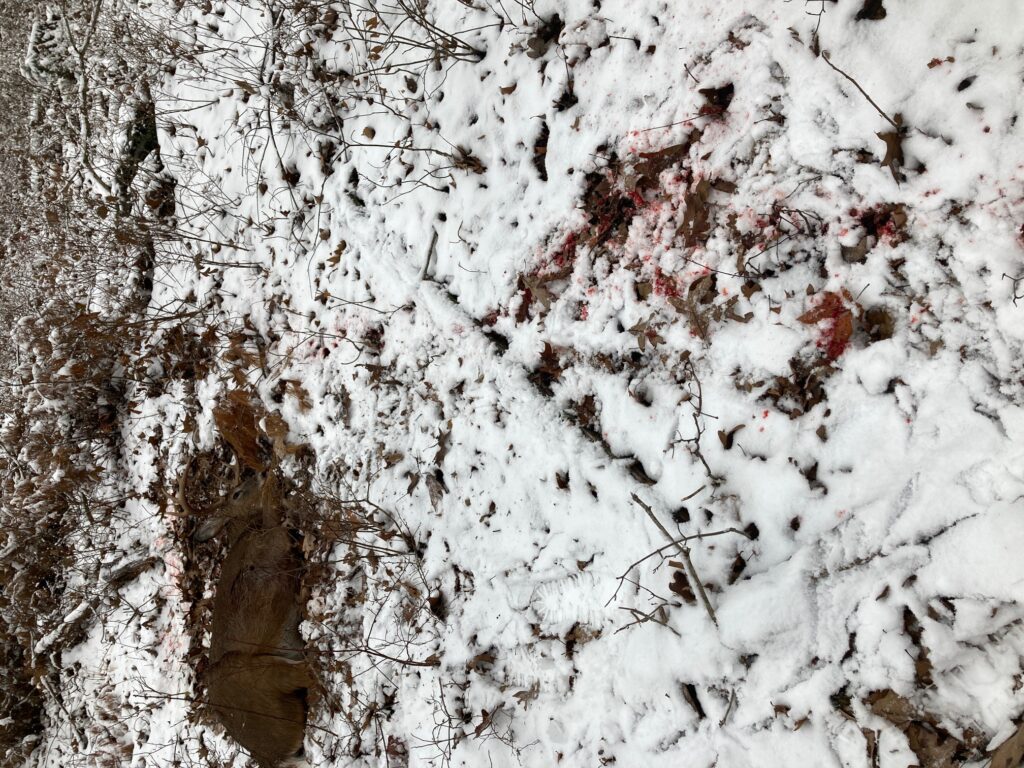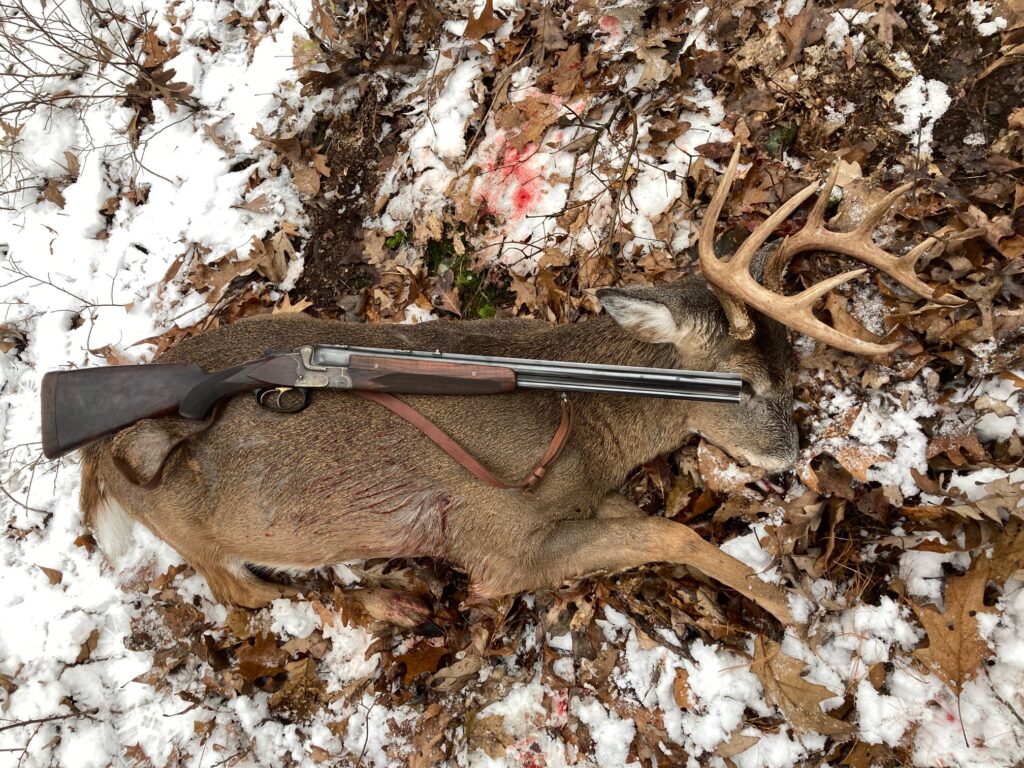December 5th, 2021 • 14:12
It doesn’t matter how many seasons I’ve spent afield, or how many big game animals I’ve taken while hunting. I am always surprised at how many strange circumstances there are in the woods that challenge my expectations and prior experiences. Over the decades some fatally wounded animals have gotten away from me, despite my best efforts to locate them. Or at least I thought they had gotten away, because I did not find them where I expected them to be, and ended up going home mystified about how such a large animal could seemingly vanish into thin air. Each one of these losses has been a “teachable moment,” and the better I became at following up wounded animals, the more I was able to look back on ones that got away (that actually were there but not found) and realize where and how I had failed to look.
Learning from these moments is important, because dying animals sometimes pull off disappearing acts that you can’t believe. That you would not believe if someone told you, and you would not believe if you did not see it with your own eyes. One big take away from my experiences is big game like deer and bear can be dead on their feet but nonetheless run far on adrenaline, and then do a head dive under a log, into a leaf pile, or over a cliff, thereby disappearing from view. It is up to the hunter to decipher the clues left behind by the mortally wounded animal, so that we can track it down and bring it to hand. Losing wounded big game animals is a big no-no, and although it does happen, it really shouldn’t happen very often.
Even with tracking dogs now legal in Pennsylvania for finding lost big game, a lot of hard work can be avoided if the hunter can figure out what likely happened right away.
Last Sunday morning I was reminded yet again that fatally hard-hit deer can nonetheless run pretty far, not leave much of a trail to follow, leave little or no blood trail, seem to disappear, and important clues about how far they are likely to go can often be found right at the site of initial bullet contact. Even in snow, which in the best circumstances shows all kinds of evidence that is easy to follow.
He had been grubbing for acorns in the brush behind the log at the top of the picture below. He was shot there when he turned broadside, at 120 yards. Notice the wildly turned up leaves and dirt, as his first few frantic leaps propelled him away from the scene of attack as fast as possible. There are just a couple of these scuff marks, and no blood visible on the snow yet. If snow were not present, we would only have the violent scuff marks as an indication an animal had reacted wildly and sought immediate escape. These scuff marks are typically (though not always) only found where the animal has taken a hard hit. In dry leaves and no snow, this might be your only clue at the beginning of a long and faint trail left by a fatally wounded animal.

The buck left a good clue that he was hit hard the first time: A series of sliding steps with scuffed up leaves and some minor blood spray, just little drops, right before bounding farther up the hill and turning around to regard his former position like he’d been stung by a bee. That’s when I shot him the second time. I knew I had connected with the first shot, but my impression was that it was not a hard or fatal hit.

Below is the buck after the second bullet, at about 140 yards, the hole of which is visible behind his shoulder; a classic behind-the-shoulder double lung/ top of heart hit. Usually it’s immediately fatal. Usually the animal is knocked down by the impact. But not that day. He absorbed the second soft point without moving, just standing there broadside, as if I had completely missed him. Even after he dropped he had a lot of life and fight left, as can be seen in his death spiral in the snow.

My challenge was that I did not see him fall, which happened while I was fumbling with my binoculars. Because I do not often use a rifle scope, I do not maintain a magnified field of view after my shot. Going back and forth between open sights and binoculars is my process.
As an aside, you may wonder why I use open sights, or you may be one of those people who deride open sights. Shooting instinctively with open sights is how I grew up and how I learned to hunt. Unlike a scope, open sights can take a lot more abuse in the field before they go out of whack. Unlike a scope, they cannot possibly lose their “zero” after spending eleven months in a closet. Open sights are absolutely reliable, and perfectly effective. Recall that American infantry are qualified on open sights out to 600 yards (or meters), so it is not like these things are relics from the past. Open sights are the best option, provided they are installed correctly and checked annually.
My preference for open sights is about more than performance, however. It has to do with how I like to hunt: On foot, getting close to the animal, within its sensory zone, and trying to kill it on its own terms, up close. This is a true contest of skill, not an assassination. And I hardly think an open-sighted center fire rifle is a disadvantage; it is a huge advantage over a spear or a bow. Scoped rifles are just that much more of an advantage.

So, I did not see the buck fall, and he fell into a small swale where I could not see him. Not wanting to stink up the woods and ruin further hunting, I sat on my butt and scoured the woods for signs of a deer. In fact, I saw a large buck a couple hundred yards away sneak into a thick tree top blowdown. It made me think the buck I had shot at was gut-shot and sneaking away to lie down, and so I did not push him. Only when the crows showed up over an hour later was it evident that the buck was in fact dead right where I had last seen him.




No Comment
Be the first to respond!